calsfoundation@cals.org
Desha (Independence County)
Desha is located on State Highways 14 and 25 (a.k.a. Heber Springs Road) in Independence County about six miles southwest of Batesville, the county seat. Desha is closely associated with nearby Locust Grove (Independence County), Jamestown (Independence County), McHue (Independence County), and Southside (Independence County). The White River is about one mile to the north, and Ramsey Mountain (a.k.a. Ramsey Hill) lies about two miles to the east.
There is evidence that Hernando de Soto and his men journeyed through the Greenbrier Bottoms (named for Greenbrier Creek—originally spelled Greenbriar) in October and November 1541. Dr. Julie Morrow of Arkansas State University in Jonesboro (Craighead County) began the process of archaeological study and research into the Native American city of Coliqua in the bottoms, a place that flourished from 1350 to 1555.
Pioneers looking for arable land and woods filled with game began arriving before the Arkansas Territory was formed. Thomas Peel Sr. was born in County Down, Ulster, Northern Ireland, on February 2, 1744. He arrived in a cavalcade of fifteen families from southwestern Kentucky in 1815, including Ben and Joab Hardin, Samuel Elms, John Craig, and Thomas Wyatt. There were no towns in the region when they arrived. The first town, Locust Grove, was founded in 1838. Thomas Peel’s wife, Polly Hardin, died shortly after arriving in the Greenbrier Bottoms. One of their descendants, Samuel West Peel, became the first person born in Arkansas to be elected to the U.S. Congress.
When the Desha area was settled in the early 1800s, the region was collectively called Alderbrook (originally spelled Alder Brook) after Alderbrook Creek. A trading post was established in the 1830s. A house was built next to the trading post in about 1832. Although it has had a few modifications, it is said to be the second-oldest house in Arkansas still standing in the twenty-first century. A bedroom off the carport that has a chimney was the original log cabin. It later became an inn. The Alderbrook trading post/post office was replaced by a post office in Jamestown in 1880 and one in Desha in 1883. The first postmaster at Desha was Elvin A. Young. Today, besides the creek that still bears the name, the only trace of the Alderbrook name is the Alderbrook Cemetery, the main cemetery for Desha and the surrounding area.
Rich farmland was found between Desha and Locust Grove in the Greenbrier Bottoms, and cotton became an important local crop. The rugged mountains near Desha, Jamestown Mountain, and Brock Mountain were popular hideouts for outlaws. Stagecoach robbers from the Newport (Jackson County) area were apprehended near the Alderbrook Trading Post in the 1840s and hanged on the spot. Their gold was never recovered, though treasure hunters continue to look for gold along the banks of Alderbrook Creek, where the robbers claimed to have hidden their loot. A shootout on Jamestown Mountain broke out in 1893 when fugitives from the Olyphant Train Robbery were cornered on the Clem Wackerly place. Three of the robbers were hanged in Newport after a quick trial. Chief Deputy Everett Wheeler was murdered by fugitive Robert Rose on Brock Mountain on January 2, 1935, in one of the most publicized events in the history of Independence County.
Desha derives its name from the Desha family and the Searcy/Desha cotton gin that stands on the main highway. The Searcy and Desha families lived at Fox Hill. Their beautiful home has been restored and still stands. The house also has historical importance as the Civil War–era site of General Joseph Shelby’s winter encampment for his Confederate cavalry regiment from January until June 1863. Franklin Wharton Desha, who married Elizabeth Jett Searcy, was a captain in the Mexican War. He was also a lieutenant colonel for the Confederacy during the Civil War. He was captured and became a prisoner of war, paroled in Jacksonport (Jackson County) on June 5, 1865. He died at Fox Hill in 1869. Desha County in southeastern Arkansas is also named for the Desha family.
Dr. Lycurgus Adair (L. A.) Dickson, a physician, moved to Desha from Murfreesboro, Tennessee, in 1856 and was still practicing medicine there when he died in 1904. During the Civil War, while serving as a Confederate army surgeon, Dickson married Elizabeth Gray (Lizzie) Neill, daughter of Judge Henry Neill, who was the first postmaster at Alder Brook, a member of the Arkansas General Assembly in 1846, and later Independence County Judge (1874–1876). Judge Neill and his wife, Dorcas Stark Neill, lived for more than sixty years on their homestead near Desha. Their son, Job Neill, served in the Confederate army and was killed at the Battle of Wilson’s Creek. Another son, Robert Neill, who was also in the Confederate army, became a successful lawyer after the war and served as U.S. congressman for his district from 1893 to 1897.
Ben Desha bought the cotton gin from his mother Elizabeth Jett Searcy’s family in 1919. The gin eventually came under the management of his nephew, Desha Lester. The gin, which was the last to operate in the county, is no longer active.
In the early 1940s, schools in the surrounding communities of Locust Grove and Jamestown were consolidated with Desha’s school. The Desha school was consolidated with the Batesville School District in 1985.
Greenbrier Bottoms was a popular spot for drag racing by local teens in the 1950s and 1960s because of two long stretches of highway with only one curve.
Productive farming continues in the Greenbrier Bottoms, but soybeans and other crops have dethroned cotton. In the twenty-first century, Desha consists of a few businesses, including the Desha Barber Shop, which was run by Daniel Moody for forty-three years until the time of his death. The community also has a Baptist church and a Methodist church.
For additional information:
Biographical and Historical Memoirs of Eastern Arkansas. Chicago: Goodspeed Publishing Co., 1890.
Luker, Lady Elizabeth. “The Olyphant Train Robbery.” Stream of History 18 (November 1981): 2–12.
McGinnis, A. C. “A History of Independence County, Ark.” Special issue. Independence County Chronicle 17 (April 1976).
Morrow, Julie. “Ongoing Research and Laboratory Analyses of Materials Recovered from the Greenbrier Site, 3IN1.” Field Notes: Bulletin of the Arkansas Archeological Society 310 (2003): 3–6.
Kenneth Rorie
Van Buren, Arkansas
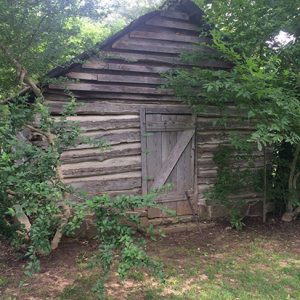 Alder Brook Trading Post
Alder Brook Trading Post 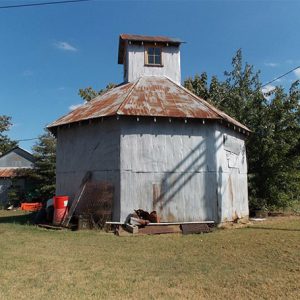 Desha Cotton Gin
Desha Cotton Gin  Desha High School
Desha High School  Greenbriar Bottoms
Greenbriar Bottoms 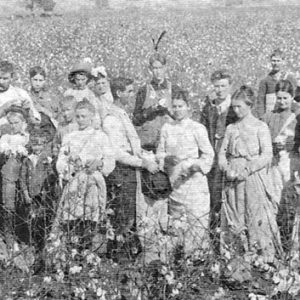 Greenbrier Bottoms Cotton Pickers
Greenbrier Bottoms Cotton Pickers 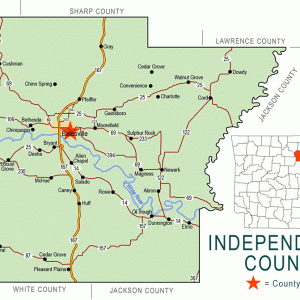 Independence County Map
Independence County Map 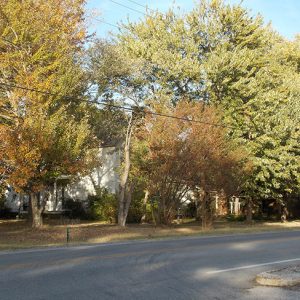 Wyatt House
Wyatt House 




My grandparents Wilbern and Lottie Compton Mayes lived in the old Alderbrook house after my grandfather Wilbern bought it from Robert Stroud in ;64 or ’65. It was in complete ruin on the verge of collapsing in on itself. They lived in Little Rock where Wilbern worked and would come up on weekends to work on it with the help of friends and relatives. Wilbern’s cousin Lindsey Bridgemam helped a lot clearing the land and whatnot. The story we always heard was the first room of the house was built somewhere around 1813 or 1814. Us grandkids loved visiting and growing up there; wish one of us had it now.